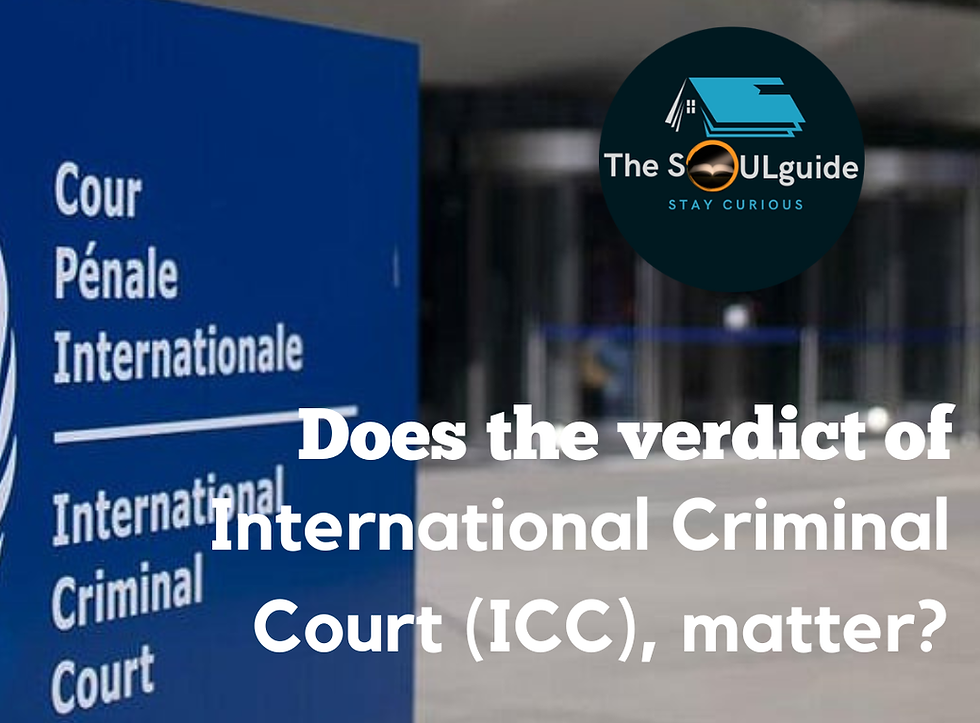What is One Rank One Pension Scheme (OROP) ?
- TheSoulGuide

- Jan 14, 2023
- 3 min read
The government of India had agreed to the demands of retired Army personnel that was pending since long, the topic has gained traction among the mainstream owing to the political parties taking it up in their election manifestos. The current ruling government the BJP in India had promised in their manifesto to make it come into force if voted to power. Let's first understand what this is all about?

What is One Rank One Pension Scheme?
One Rank One Pension (OROP) implies the payment of the same pension to armed forces personnel for the same rank and the same length of service, irrespective of the date of retirement.
Basically, it won't matter when you retired and at what pay scale back then in past the personnel was serving retired at, the pension will be according to the rank for the personnel retiring today or had retired 20 years ago.
For example. An officer who has been in service for 15 years (from 1985 to 2000), and retired in 2000 would get the same pension as an officer who retired in 2010 and was in service from 1995 to 2010 (15 years).
How the Pension used to be given before the OROP came into force?
Before this system, the prevailing system for calculating the personnel’s pension was based on the last salary drawn where the length of the service did not matter and what was taken into consideration was the last salary received by the personnel.
The Debate
A lieutenant general who retired in 1995 would be receiving a pension that is almost 10% lower than a colonel who retired after 2006, even if they had the same length of service. For example, who retired in 1995 would get almost 80% less pension than his counterpart who retired after 2006.
With every pay commission, the difference between the pensions of present and past pensioners has grown wide.
Armed forces personnel typically have shorter careers since about 80% of the soldiers compulsorily retire between the ages of 35 and 37. And, about 12% of soldiers retire between 40 and 54 years. This means they retire at far younger ages when compared to the usual 60 years in case of civilians. Therefore, adequate support is required for military personnel to sustain a dignified life.
However the implementation of this scheme will be a huge financial burden on the exchequer. The annual financial burden is expected to be between INR 8000 to 10000 crore and this amount will increase with every revision of the salaries. that too when the armed forces get dedicated army schools, colleges, hospitals, subsidized food and beverages, quotas for children in universities and schools, etc.
History of Army Pensions
In 1973, the Indira Gandhi-led government terminated the OROP model. Then, the Third Pay Commission reduced the pensions of soldiers while increasing the pensions of civilians.
In 1986, the Rajiv Gandhi implemented the Rank Pay Scheme in the wake of the Fourth Pay Commission. This brought the basic pays of seven officer ranks in the army (and their equivalents in the navy and the air force) down by fixed amounts designated as rank pay.
This caused reduced pensions for many personnel of the armed forces in 1986 and later years. Also, this caused an asymmetry in the pay scales of armed forces officers and their equivalent officers in the Indian Police Force (IPS).
The Koshiyari Committee of 10 members chaired by Bhagat Singh Koshiyari submitted its report in 2011 which accepted the OROP.
The issue
Similar demands can also be made by the other paramilitary forces like the CAPF, Assam Rifles, SSB, etc. The police forces have also started making similar demands as even their conditions of service are often tough. The implementation of this scheme can also be an administrative challenge due to the lack of records going back decades.
Present OROP Scheme
The estimated annual expenditure for the implementation of the revision has been calculated as approx. INR 8,450 crore @31% Dearness Relief (DR). Arrears w.e.f. July 01, 2019 to December 31, 2021 have been calculated as over INR 19,316 crore based on DR @ 17% for the period from July 01, 2019 to June 30, 2021 and @31% for the period from July 01, 2021 to December 31, 2021. Arrears w.e.f. July 01, 2019 to June 30, 2022 have been calculated as approx. INR 23,638 crore as per the applicable dearness relief. This expenditure is over and above the ongoing expenditure on account of OROP.
Rank wise likely estimated increase (in rupees) in service pension under OROP w.e.f. July 01, 2019 (Source: Press Information Bureau, GOI)

stay tuned for more.
Get membership to feature your article. Check here.




Comments